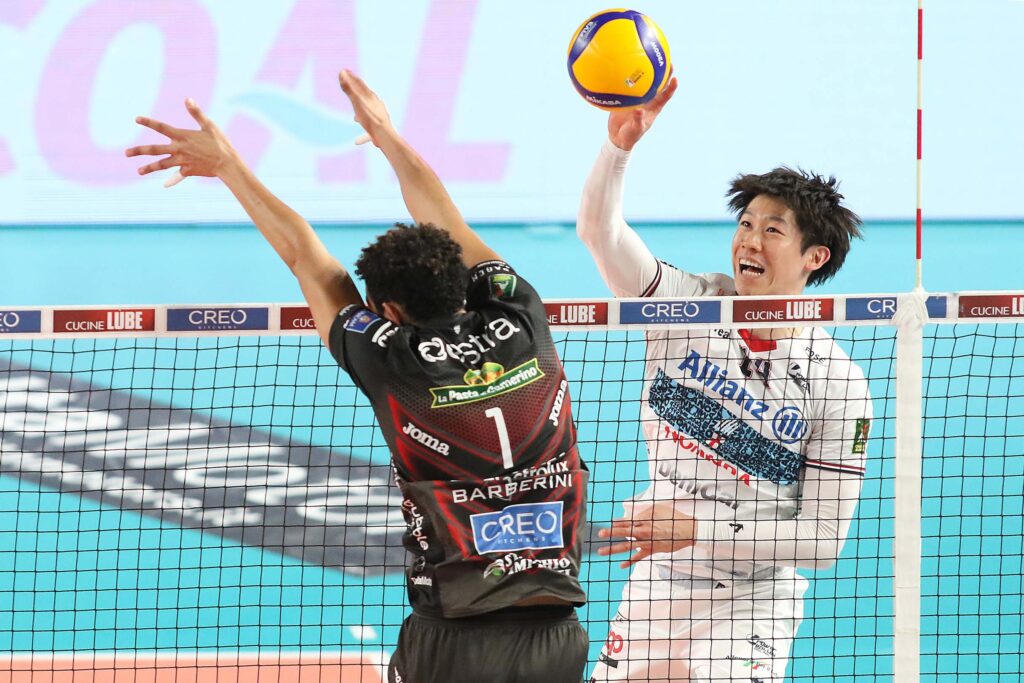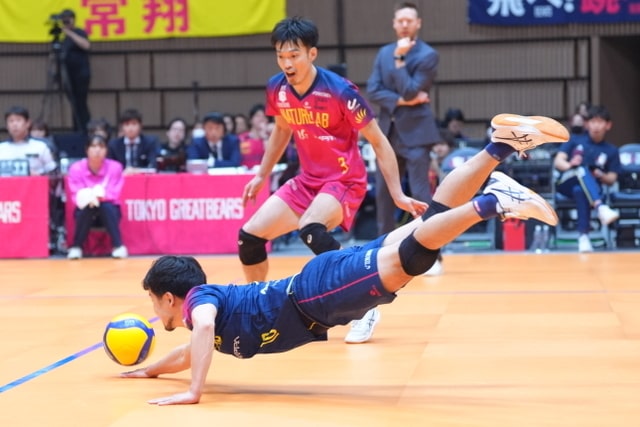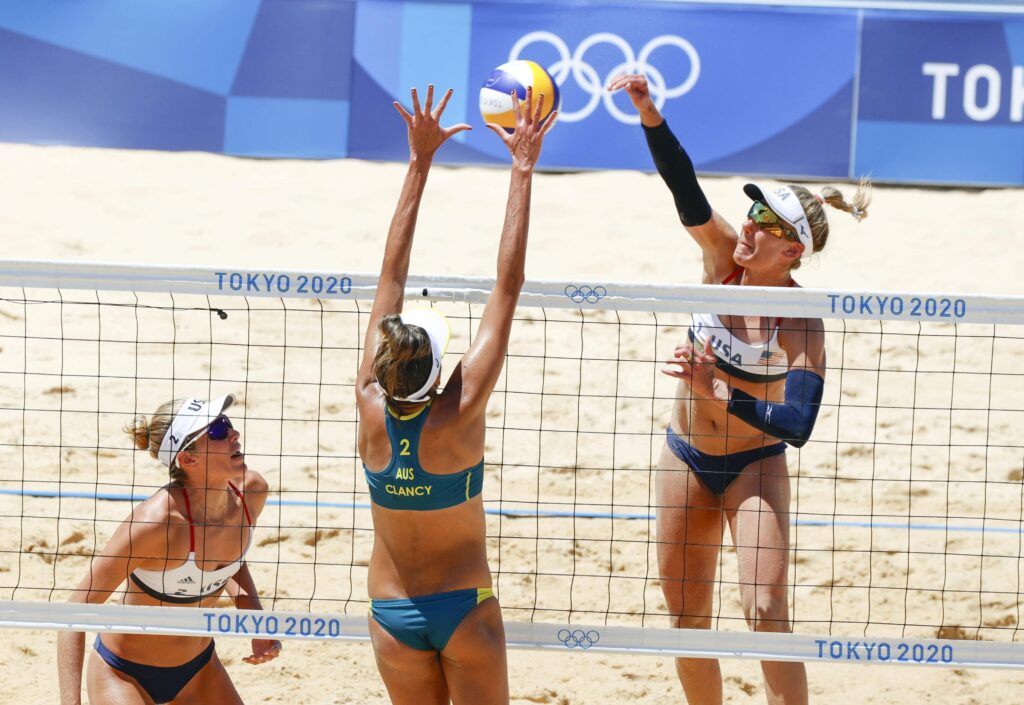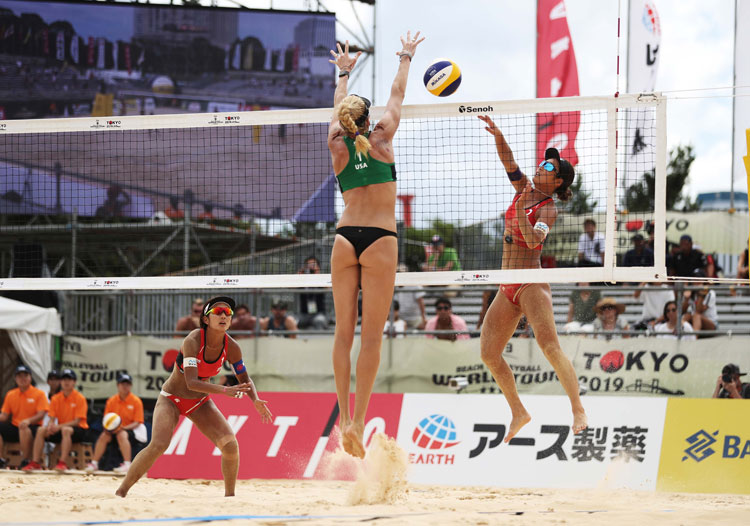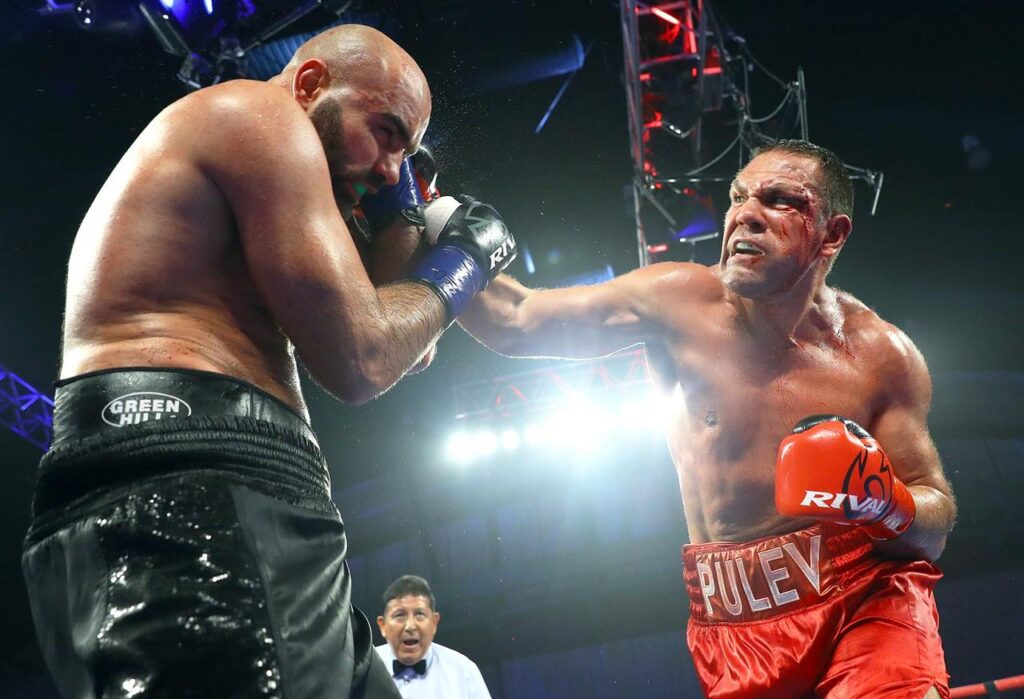
In order to be successful in boxing, it is important to know the different types of punches and how to use each one effectively.
Each punch has a unique purpose and usage situation, and by mastering that technique, you can expand your range of strategies in the ring.
It is a skill that all athletes, from beginners to experienced boxers, should constantly hone.
In this article, we will explain in detail the types of punches that are the basics of boxing, how to use each punch effectively, and training methods.
From jabs to uppercuts, mastering the key points of each punch will take your boxing skills to the next level.
Come along and learn the punching techniques you need to win in the ring.
目次
- 1 Basic knowledge of boxing punches – Basics and types of punches
- 2 Jab techniques and practice methods – master the basics of boxing strikes
- 3 The power of a straight punch – how to damage your opponent
- 4 How to hit a hook – key points and effective training methods
- 5 The secret of the uppercut – a powerful blow that leads to KO
- 6 Cross Punch Tactics – Gain an advantage with strategic strikes
- 7 How to give a body blow – Get a tactical advantage by attacking the stomach
- 8 Punching strategy combined with defense – techniques to turn defense into attack
- 9 Building a Training Routine – How to Practice to Punch Effectively
- 10 Punching tips learned from professional boxers – Skills and mindset of advanced players
Basic knowledge of boxing punches – Basics and types of punches
In boxing, the punch is the fighter’s main weapon and the basic means of inflicting damage on the opponent.
But more than just swinging your fists, boxing punches require skill and strategy.
Understanding proper form, timing, and how to use force is essential to effective punching.
Here, we will delve into the basics of punching as a basic knowledge of boxing punches.
types of boxing punches
The main types of punches in boxing are:
- Jab : The most basic punch, used to attack an opponent while maintaining reach. This is a punch that requires speed and accuracy.
- Cross (straight) : A powerful punch followed by a jab that is highly effective even from long distances. I mainly hit with my dominant hand.
- Hook : A punch that is swung from the side with a bent arm, which can cause great damage to the opponent’s side.
- Uppercut : A punch in which the fist is raised from the bottom up, aiming at the bottom of the opponent’s guard. Especially effective at close range.
- Body blow : A punch to the stomach that reduces the opponent’s strength and lowers their guard. If you use the body on the counter, you can knock down your opponent with pain.
Basic principles of punching
- Accuracy of Form : Effective punching begins with correct form. By properly coordinating the movements of your shoulders, arms, and hips, you can maximize your strength.
- Balance : It is important to keep your body balanced when throwing a punch. If you lose your balance, the power of your punches will decrease and you will be more susceptible to counter attacks.
- Combination with defense : An effective punch is one that is performed in combination with defense. Even when throwing a punch, you need to protect yourself and prepare for your opponent’s counterattack.
- Efficient use of energy : When punching, it is important to use less force than necessary to minimize fatigue. By using energy efficiently, you can sustainably perform throughout the match.
Learning the basics of boxing punches is the first step to improving your overall boxing technique.
By learning the correct techniques and strategies and practicing, you can increase your confidence and effectiveness in the ring.

Jab techniques and practice methods – master the basics of boxing strikes
The jab is one of the most basic and important striking techniques in boxing.
In addition to inflicting damage on your opponent, it also helps you measure distance, control your opponent’s movements, and help you build attacks and transition to defense.
Let’s take a closer look at jab techniques and how to practice them.
Technical points of the jab
- Stance and Balance : Before launching the jab, feet should be shoulder-width apart, knees slightly bent and relaxed. Keep your center of gravity centered and put some weight on your front foot to help you launch the jab quickly.
- How to extend your arm : When launching a jab, quickly extend your forearm forward and keep your fist pointing straight toward your target. During the final stage of the punch, the force of the punch is increased by rotating the fist.
- Weight Shift : When delivering a jab, add additional power to your punch by shifting your weight slightly to your front foot. This movement should be natural and smooth.
- Return movement : After throwing a punch, immediately return your hands to the guard position and prepare to defend. Avoid counters by quickly returning your hand.
How to practice the jab
- Shadow Boxing : Take a stance in front of a mirror and repeat the jab motion. Focus on proper form and weight transfer, and observe and correct your own movements.
- Heavy bag training : Use a heavy bag to develop the power and speed of your jab. Continue to strike the jab in a steady rhythm to improve the accuracy and power of your punches.
- Pad Training : Aim your jab at the mitt of your trainer or partner. This increases the accuracy of jabs while moving and in combinations.
- Speed Bag : Improve the speed and timing of your punches by using a speed bag. You can train your jab speed and accuracy at the same time.
- Distance practice : Practice jabbing at different distances from your opponent (or target). Understand your reach limits and learn how to jab effectively from any distance.
Mastering the technique of the jab will improve your overall boxing skills.
Through regular practice and reflection, perfect this basic striking technique and increase your confidence and effectiveness in the ring.

The power of a straight punch – how to damage your opponent
The straight punch is one of the most basic and powerful attacks in boxing. A straight shot fired accurately can penetrate the defense and cause great damage to the opponent.
To get the most out of this punch, you need to understand and learn proper form, timing, and power delivery.
straight punch form
- Stance : To hit a powerful straight, you need a stable stance. Keep your feet slightly wider than shoulder-width apart and your knees slightly bent to maintain flexibility. Distribute your weight evenly between your feet and lean forward to convert forward force into a punch.
- Arm Movement : When delivering a straight punch, extend your fist straight in front of you and twist it at the moment of impact. This twist gives the punch additional power and increases the impact on the opponent.
- Weight Shift and Rotation : When throwing a punch, shift your weight from your back foot to your front foot. At the same time, by rotating your hips and shoulders, you concentrate all of your body’s power into your fist.
How to increase the power of a straight punch
- Improved accuracy : The power of your punches is maximized by precisely hitting your opponent’s weak points. Improve your punching accuracy through mitt training and sparring at the gym.
- Speed Training : By increasing the speed of your straight, you can increase the damage you inflict on your opponent. Speed bag and shadow boxing are effective training methods to increase the speed of your punches.
- Power Training : Strengthening your core and lower body is important to increase the power of your punches using your entire body. You can improve the power of your straight punch by incorporating weight training such as squats and deadlifts.
- Use in combinations : Rather than a single straight, using it in combination with other punches such as jabs and hooks will make it easier to break down defenses and increase the effectiveness of the straight.
- Relaxation and Concentration : Maximizing the power of a straight punch is by relaxing your muscles until the moment you throw the punch, and then concentrating and releasing force at the moment of impact.
The power of a straight punch is determined by proper form, speed, power, and accuracy.
By practicing and honing these elements, you will be able to cause great damage to your opponent in the ring.

How to hit a hook – key points and effective training methods
A hook is a powerful punch in boxing that has the ability to cause great damage to an opponent.
If you can hit accurately, you can change the flow of the match in an instant.
The following are the key points for effective hook hitting and training methods.
Key points on how to hit a hook
-
Stance and balance :
- Take a proper stance, with your feet about shoulder-width apart. Bend your knees slightly and relax your body.
- When punching, it is important to shift your weight from your back foot to your front foot.
-
Arm position and fist direction :
- When hitting a hook, keep the elbow of your hitting hand horizontal and your fist either vertically or horizontally.
- When punching, your elbow should be at the same level as your fist. This maximizes the power of your punch.
-
Body rotation :
- The power of a punch is generated not only by the arms but also by the rotation of the body. Use your hips to rotate your entire body and convert that movement into a hook.
- Rotating your body with precise timing is the key to creating a powerful hook.
-
Punch return :
- After throwing a punch, immediately return your hands to guard position. This allows you to protect yourself from your opponent’s counter attacks.
effective training methods
-
Practice with a heavy bag :
- Use a heavy bag to increase the power and accuracy of your hooks. By hitting the hook from different angles, you will get used to using it in real combat.
-
Mitt training :
- Do mitt training with your trainer or partner to improve hook accuracy on the move and during combinations.
-
Shadow boxing :
- Shadow boxing in front of a mirror to check your hook form and body rotation. Visually checking your movements will help you improve your technique.
-
Balance of speed and power :
- Practice punching with varying intensities to find the balance between hook speed and power. Be careful not to reduce the power of your punches in pursuit of speed.
The hook is a very effective punch in boxing, but proper technique and practice are essential.
By consistently practicing the key points and training methods listed above, you can significantly improve the power and accuracy of your hooks.

The secret of the uppercut – a powerful blow that leads to KO
The uppercut is one of the most powerful punches in boxing that can cause decisive damage to your opponent.
This technique is used to hit the underside of the opponent’s guard, and is especially effective in close combat.
Let’s dig into the secret behind how the uppercut leads to a KO and how to use it effectively.
The secret of the uppercut
-
Unpredictable Angle : Since uppercuts are launched from bottom to top, they come from an angle that is difficult for the opponent to predict and defend against. This is one of the main reasons why uppercuts can KO opponents.
-
Attacking holes in your defense : Many boxers are used to defending themselves against hooks from the side and straights from the front, but are vulnerable to attacks from below. Uppercuts aim at gaps in defense like this.
-
Direct hit to the chin : Uppercuts are primarily used to target the opponent’s chin, which can easily result in a KO. The chin is one of the body parts that is most likely to cause a KO, and if hit accurately it will cause a huge loss of balance.
How to hit an effective uppercut
-
Start from a low position : To land an effective uppercut, start from a low position. This allows you to maximize the power of your punches and harness the power from above.
-
How to use your knees : The source of the uppercut’s power comes from bending and straightening your knees. When throwing a punch, bend your knees and then forcefully extend them, putting all of your body’s power into the punch.
-
Rotation of the hips : When performing an uppercut, it is important to rotate the hips slightly. This allows you to convert the power of your whole body, not just your arms, into the punch.
-
Hand Return : After throwing a punch, quickly return your hand to a guard position to prepare for your opponent’s counter attack. The uppercut is a powerful attack, but you must be careful after releasing it, as it is especially susceptible to counter attacks.
training method
- Heavy Bag : Use the heavy bag to increase the power and accuracy of your uppercuts. By using bags of different heights, you can get used to uppercuts from different angles.
- Mitt training : Through mitt training with a trainer or partner, you will hone your uppercuts while moving and the timing of uppercuts in combinations.
The uppercut is a powerful punch that can completely change the outcome of a battle if used correctly.
Make sure to practice hard and be ready to use it in a match.

Cross Punch Tactics – Gain an advantage with strategic strikes
A cross punch is a powerful straight-line attack in boxing that can cause great damage to an opponent, especially when used with the dominant arm.
By cutting through your opponent’s defense with a jab and then hitting a cross, you can effectively score points or aim for a KO.
Here, we will explain the key points for using cross punches tactically and how to gain an advantage in a match with strategic strikes.
Basics of cross punch
A cross punch is a punch that is launched in a straight line with the hand behind the body (dominant hand). In order to maximize the effectiveness of this punch, it is important to keep the following basics in check.
- Weight Transfer : When launching the cross, make sure to shift your weight from your front foot to your back foot. This allows you to put your whole body’s power into the punch.
- Hip rotation : To increase the power of your punches, use your hips actively. By synchronizing your hip rotation with your punch, you can generate more power.
- Straight line : It is important to shoot the cross in a straight line. This makes it possible to achieve both speed and accuracy.
Tactical use of cross punches
- Cross from jab : Use a jab to get the opponent’s attention and once they raise their guard, hit a cross. This series of movements is difficult for the opponent to predict and leads to effective strikes.
- Cross as a counter : You can perform a powerful counter attack by throwing a cross right after dodging your opponent’s attack or when your opponent’s punch has missed the air.
- As part of a combination : Crosses can be used in conjunction with hooks and uppercuts to create attack patterns that are difficult for your opponent to predict. By attacking from various angles, you can easily break down your opponent’s defense.
effective training methods
- Mitt Training : Increase your cross speed and accuracy through mitt training with a trainer or partner. In particular, practice smooth transitions from jab to cross.
- Sparring : It’s important to test your timing and strategic use of crosses through sparring in a realistic environment. Learn how to use the cross in real movements.
By using cross punches strategically, you can inflict great damage on your opponent in a boxing match and turn the situation in your favor. Master the basics so you can use them in matches.
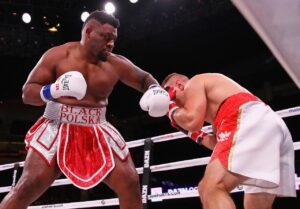
How to give a body blow – Get a tactical advantage by attacking the stomach
A body blow is a powerful punch delivered to the abdomen of an opponent in boxing and other martial arts.
A precise body blow to the abdomen robs the opponent of their physical strength and gives them a tactical advantage.
This attack is especially effective when the opponent’s guard is high and it is difficult to attack the face.
Below, we will introduce how to effectively throw body blows and points to help you gain a tactical advantage.
How to give a body blow
-
Appropriate distance and timing :
- In order to land a successful body blow, it’s best to maintain an appropriate distance from your opponent and perform it immediately after your opponent finishes their attack, or at the moment your opponent makes a move to launch an attack.
-
Weight shift and hip rotation :
- To increase the power of your punch, shift your weight from your back foot to your front foot at the moment you punch, rotate your hips, and use your entire body’s strength.
-
Elbow position :
- When delivering a body blow, keep the elbow of your throwing hand close to your body so that the punch goes straight towards your opponent’s abdomen. This increases the accuracy and power of your punches.
-
Maintaining guard :
- Even as you lean forward to throw a punch, keep your other hand in a position to protect your face and avoid being countered.
Use body blows tactically
-
Read your opponent’s patterns :
- If your opponent attacks with a certain rhythm or pattern, such as after a jab or straight, you can read that pattern and use a body blow as an opportunity to counterattack.
-
As part of the combination :
- Body blows can be used in conjunction with other punches such as jabs and hooks to break up your opponent’s defenses and deal effective damage.
-
Reduce your opponent’s stamina :
- As the match progresses, you can gradually wear away your opponent’s stamina and slow them down by repeatedly delivering body blows.
training method
-
Practice with a heavy bag :
- Use a heavy bag to practice increasing the power and accuracy of your body blows. Practice body blows from different angles and improve your ability to apply them in real combat.
-
Mitt training :
- Through mitt training with a trainer or partner, you will learn how to hit the body while moving. In a match, your opponent will be moving, so be sure to hit your opponent’s moving body with your mitts.

Punching strategy combined with defense – techniques to turn defense into attack
Defense and attack in boxing are closely related.
If you can turn your defense into an opportunity to attack, rather than just guarding or dodging, you can gain a huge tactical advantage.
Below, we will explain punching strategies combined with defense, techniques that turn defense into attack.
Counter attack from defense
-
Parry and counter :
- While blocking the opponent’s punch with a parry (movement that deflects the fist), use that movement to immediately counterattack. The moment you lose your opponent’s balance with a parry, counterattack with a jab or straight.
-
Slip and counter :
- After avoiding your opponent’s punch by moving your head to the side (slip), you immediately counterattack before your opponent can solidify their guard. Body blows are effective for counterattacking after a slip.
-
Uppercut from duck (crouching) :
- Ducks the opponent’s punch and goes under, then uses the momentum of standing up to deliver an uppercut. This allows you to attack from angles your opponent doesn’t expect.
-
Immediate counterattack after block :
- Immediately after blocking the opponent’s attack, he immediately releases a counter. Perform a cross or hook with the hand opposite to the one that blocked.
Training to improve defensive techniques
-
Shadow boxing :
- In addition to attacking movements, consciously incorporate defensive movements such as parries, slips, and ducks. Practice with a smooth transition from defense to attack.
-
Sparring :
- In sparring with a partner, try out combinations of defense and attack in a manner similar to actual combat. In particular, read your opponent’s attack patterns and determine when to effectively counterattack.
-
Mitt training :
- Trainers and partners demonstrate attacking movements with their mitts to practice defensive counterattacks. Focus on practicing immediate counterattacks after defensive moves, so that you can counterattack reflexively.
tactical application
The technique of turning defense into offense is very effective in reducing the opponent’s desire to attack and allowing you to fight at your own pace. Seamlessly combining defense and offense will make you an unpredictable fighter and give you a tactical advantage. Practice and train every day so that you can use this technique naturally in actual combat.

Building a Training Routine – How to Practice to Punch Effectively
A training routine to develop effective punching power requires a well-balanced training of technique, power, speed, and endurance.
Here we will introduce a comprehensive training plan to improve your punching power.
1. Warm up and improve flexibility
- Time : 10-15 minutes
- What : Light jogging, skipping, and dynamic stretching will warm up your entire body and increase flexibility and ease of movement. Focus on moving your shoulders, arms, hips, and leg joints in particular.
2. Shadow boxing
- Time : 3 rounds x 3 minutes
- Content : Focus on technique and form review. Combine basic punches such as jabs, crosses, hooks, and uppercuts, and practice the flow of punching while moving.
3. Punching drill
- Time : 4 rounds x 3 minutes
- What it does : Use a heavy bag or mitts to practice specific punch combinations over and over again. Pay attention to power and speed to deliver each punch accurately.
4. Circuit training
- Time : 1 set 30 minutes
- Contents : Perform circuit training to develop the muscle strength necessary to improve punching power. Combine bodyweight exercises such as push-ups, pull-ups, squats, and burpee jumps to improve muscle strength and explosive power through short, high-intensity exercises.
5. Speed and reaction training
- Time : 2 rounds x 3 minutes
- Contents : Use speed bags and double-end bags to improve punching speed, accuracy, and reaction time. You can develop a sense of rhythm by reacting quickly and throwing punches, and by constantly moving.
6. Cool down and stretch
- Time : 10-15 minutes
- What it does : After calming your heart rate with a light jog or walk, do some static stretching to focus on the muscles in the areas you’ve worked specifically.
Example weekly training plan
- Monday : Punching drills + circuit training
- Tuesday : Speed and reaction training
- Wednesday : Rest or light recovery exercise
- Thursday : Shadow boxing + circuit training
- Friday : Punching drills + speed and reaction training
- Saturday : Long run or endurance training on the bike
- Sunday : complete rest
This routine is just an example, but be sure to practice every day, get plenty of rest, maintain a balance between training and rest, and train in good condition.

Punching tips learned from professional boxers – Skills and mindset of advanced players
The punching tips you can learn from professional boxers include both technical aspects and mindset.
Their success depends not just on their ability to punch hard and fast, but also on strategic thinking and mental strength.
Below, we will explain the punching techniques and mindset you can learn from professional boxers.
Punching technique tips
-
Accuracy and timing :
- It’s not just the power that matters, but the accuracy and timing of your punches. Professional boxers train their ability to predict their opponent’s movements and accurately land a punch on their target at the perfect moment.
-
Relax and punch :
- By relaxing your punches and not using too much force, you will gain speed and power. When you’re nervous, your movements slow down and you waste energy.
-
Footwork combinations :
- The power of a punch comes from your feet. Professional boxers train by combining footwork and punching to be able to throw powerful punches while moving.
-
Breath control :
- Breathing when punching is also an important factor. By exhaling at the moment of punching, you can relax and deliver a more powerful punch.
Attitude and mental attitude
-
Perseverance :
- You need the patience to continue even when things don’t go well. Improving technique is a process that takes time, and professional boxers understand the importance of repeated practice.
-
concentration :
- By concentrating on each punch, its effectiveness changes greatly. Professional boxers concentrate on each moment, whether in training or in competition.
-
Self-analysis and adjustment ability :
- Ability to objectively analyze own performance and make adjustments as necessary. Professional boxers review footage of matches and training, identify areas for improvement, and work to correct them.
-
Be unafraid to take risks :
- The courage to take bold strategies without fearing big risks is also an important mindset for professional boxers. In order to throw an effective punch, you must have the courage to accept the possibility of your opponent countering.
By incorporating punching tips learned from professional boxers into your daily training, you can not only improve your technique but also improve your performance in matches.
Focus not only on technical practice, but also on strengthening your mental health and aim to become a well-rounded fighter.

